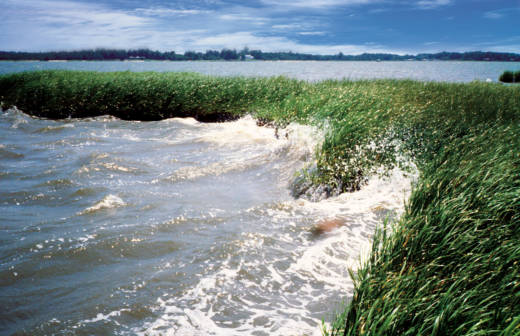Efforts by the Trump administration to rewrite wetlands regulations could undermine natural functions that are crucial to clean drinking water, flood protection and wildlife habitat, says Jessica Kao.
The Trump administration has moved decisively to weaken the Waters of the U.S. (WOTUS) rule, a federal regulatory process that seeks to protect wetlands and seasonal streams from excessive development.
This effort has suffered setbacks in the courts, which has only helped create more uncertainty about how these waters should be protected. To fill the regulatory void, California is moving to adopt its own rules, an effort that is hugely controversial but which may be necessary in the absence of sufficient federal oversight.
Wetlands and ephemeral streams are essential habitat for wildlife, and vital filters for the drinking water we all depend on every day. In many cases, they also serve as flood protection, storing or slowing down storm runoff that would otherwise threaten downstream development.
Even so, it can be difficult to explain the importance of these waterways, which are often derided as swamps. So Water Deeply recently asked Jessica Kao to put it in her own words. Until her retirement in 2017, Kao was chief of staff at the U.S. Environmental Protection Agency’s Region 9, which oversees California, Hawaii, Nevada and Arizona. She was also regional lead staffer on the Obama administration’s multiyear WOTUS rulemaking endeavor.
Water Deeply: Why should people care about wetlands and ephemeral water bodies, such as seasonal streams?
Jessica Kao: Seasonal wetlands and streams – those that become wet in response to rain, snowmelt or increased subsurface flow – are the unsung heroes of a healthy watershed. They loom particularly large in the arid and semi-arid Southwest (California, Arizona, Nevada, New Mexico, Utah and Colorado), constituting more than 80 percent of all waters. Often the headwaters or major tributaries of perennial streams, they store, transport and cycle water, nutrients and sediments throughout the watershed and provide crucial linkage between dry land and perennial rivers.
On a watershed scale, they improve water quality, attenuate erosion and flooding during high flows, recharge groundwater, maintain floodplains, and sustain vegetation, habitat and wildlife corridors. Seasonal wetlands are also vital to the survival of many reptiles and amphibians.
All communities benefit from functioning watersheds. For effective and efficient management of overall watershed health, science counsels us to approach the important hydrologic, biochemical and ecological functions of our vast networks of seasonal waters in context and cumulatively, not in isolation. However, seasonal waters – many smaller in size – have been particularly susceptible to human disturbances, falling victim to people’s preconceptions of what a wetland or a stream should be and [being seen] as undeserving of protection.
But we should not ignore science, and we risk defining away nature at our own peril. California’s fast disappearing vernal pools – irreplaceable wetlands that swell up each spring in time to host unique plant communities and endangered species – are a reminder that to degrade and destroy is easy, but to rehabilitate and restore is difficult, if not impossible.
Water Deeply: What’s the most important regulatory action we need now to start protecting these water bodies sufficiently, and end controversy and confusion around those protections?
Kao: The effectiveness of the Clean Water Act, the most significant statute we have for safeguarding the health and safety of our nation’s water resources, is underpinned by the scope of WOTUS. Unfortunately, an end to the tremendous confusion over this foundational question engendered by the Supreme Court’s fractious 2006 decision (Rapanos) does not appear in sight.
At this point, a positive start would be refraining from procedural irregularities and political maneuvers to unravel years of WOTUS scientific reviews and rule-making efforts, and instead allowing balanced discussions informed by rule of law and science to proceed. In the meantime – as with combating climate change – where the federal government waffles and retreats, states like California can enact clear laws for their waters and beef up resources and expertise to engage in areas where the federal government once used to lead.

